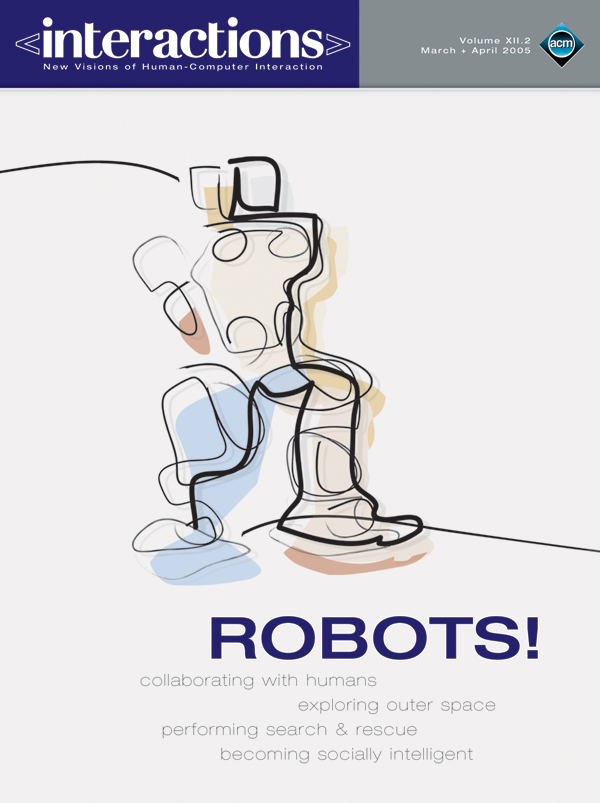Authors:
Alan Schultz, J. Trafton
Imagine mobile robots of the future, working side by side with humans, collaborating in a shared workspace. For this to become a reality, robots must be able to do something that humans do constantly: understand how others perceive space and the relative positions of objects around themthey need the ability to see things from another person's point of view. Our research group and others are building computational, cognitive, and linguistic models that can deal with frames of reference. Issues include dealing with constantly changing frames of reference, changes in spatial perspective, understanding what actions to take, the use of…
You must be a member of SIGCHI, a subscriber to ACM's Digital Library, or an interactions subscriber to read the full text of this article.
GET ACCESS
Join ACM SIGCHIIn addition to all of the professional benefits of being a SIGCHI member, members get full access to interactions online content and receive the print version of the magazine bimonthly.
Subscribe to the ACM Digital Library
Get access to all interactions content online and the entire archive of ACM publications dating back to 1954. (Please check with your institution to see if it already has a subscription.)
Subscribe to interactions
Get full access to interactions online content and receive the print version of the magazine bimonthly.







Post Comment
No Comments Found